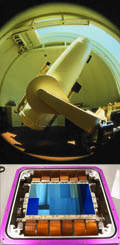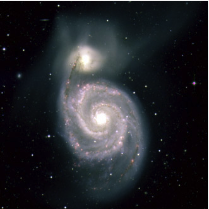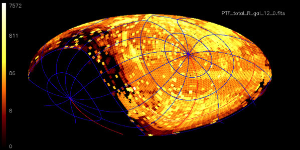
I led the data-processing development effort at IPAC. IPAC performed high-fidelity reduction and calibration of the data, and maintains a repository for all image and catalog data. Typical turnaround times for IPAC processing were of order 2-3 days before they appeared in the archive. We are also developing an NEO (near earth object) program.
All of the PTF data are publicly available. They may be accessed through the archive at IRSA.
I wrote an ADASS proceeding on this data processing and archiving architecture.
All of the PTF data are publicly available. They may be accessed through the archive at IRSA.
I wrote an ADASS proceeding on this data processing and archiving architecture.

This is a truecolor PTF image of M51 including R and g-band, as well as a rest-frame H-alpha image taken as part of a dedicated all-sky H-alpha survey.

